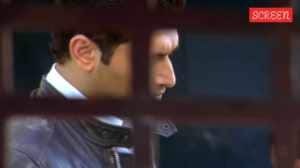Out of the shadows,the Osama hunter
Identity of man behind most crucial counterterrorism mission in CIA history is not known,only his middle name John
After US Navy SEALs killed Osama bin Laden,the White House released a photo of President Barack Obama and his Cabinet inside the Situation Room,watching the raid unfold.
Hidden from view,standing just outside the frame of that now-famous photograph was a career CIA analyst. In the hunt for the worlds most-wanted terrorist,there may have been no one more important. His job for nearly a decade was finding the al-Qaeda leader.
The analyst was the first to put in writing last summer that the CIA might have a legitimate lead on finding Osama. He oversaw collection of clues that led the agency to a compound in Abbottabad,Pakistan.
The CIA will not permit him to speak with reporters. But interviews with former and current US intelligence officials reveal a story of quiet persistence that led to the greatest counterterrorism success in CIA history.
Call him John,his middle name. John was among hundreds of people who poured into the CIAs Counterterrorism Centre after 9/11.
He had been a standout in the CIAs Russian and Balkan departments.When Vladimir Putin was coming to power in Russia,John pulled together details overlooked by others and wrote a definitive profile of Putin. He challenged the CIAs conventional wisdom about Putins KGB background and painted a fuller portrait of the man.
That ability to spot the importance of seemingly insignificant details gave him a particular knack for hunting terrorists. From 2003,when he joined the counterterrorism centre,through 2005,John was one the driving force behind a successful string of counterterrorism captures. But there was no greater prize than Osama.
By the time Operation Cannonball which began in 2006 to hunt for Osama petered out,the agency was on its third director since 9/11. John had outlasted many supervisors. John didnt want to leave. He wanted to keep the Osama file.
He examined and re-examined every aspect of Osamas life. Just keep working that list bit by bit, a senior intelligence official recalled John telling his team. Hes there somewhere. Well get there.
In 2007,a female colleague decided to zero in on Abu Ahmed al-Kuwaiti, Osamas courier.
In August 2010,the female analyst tapped out a memo for John,Closing in on Bin Laden Courier,saying her team believed al-Kuwaiti was on the outskirts of Islamabad. By 2010,John,then a deputy chief of the Pakistan-Afghanistan Department,emailed a revised memo to those who needed to know. The title was Anatomy of a Lead.
As expected,CIA Director Leon Panetta wanted to know more. By February,John told his bosses the information on the compound was unlikely to get better,that this might be their best chance to find Osama. Panettas regular meetings on the hunt often concluded with an around-the-table poll: How sure are you that this is Osama? John rated his confidence as high as 80 per cent.
John was among several CIA officials who repeatedly briefed Obama at the White House. By April,Obama decided to send in the Navy SEALs. About 40 minutes after the SEALs stormed the compound,the report came: Osama was dead. Champagne was uncorked at the CIA.
Two days later,John accompanied Panetta to the US Congress. The Senate Intelligence Committee wanted a full briefing. At one point,Panetta turned to the man whose counterterrorism resume spanned four CIA directors. And as he spoke about the mission that had become his career,the calm,collected analyst paused,and he choked up.







- 01
- 02
- 03
- 04
- 05
























